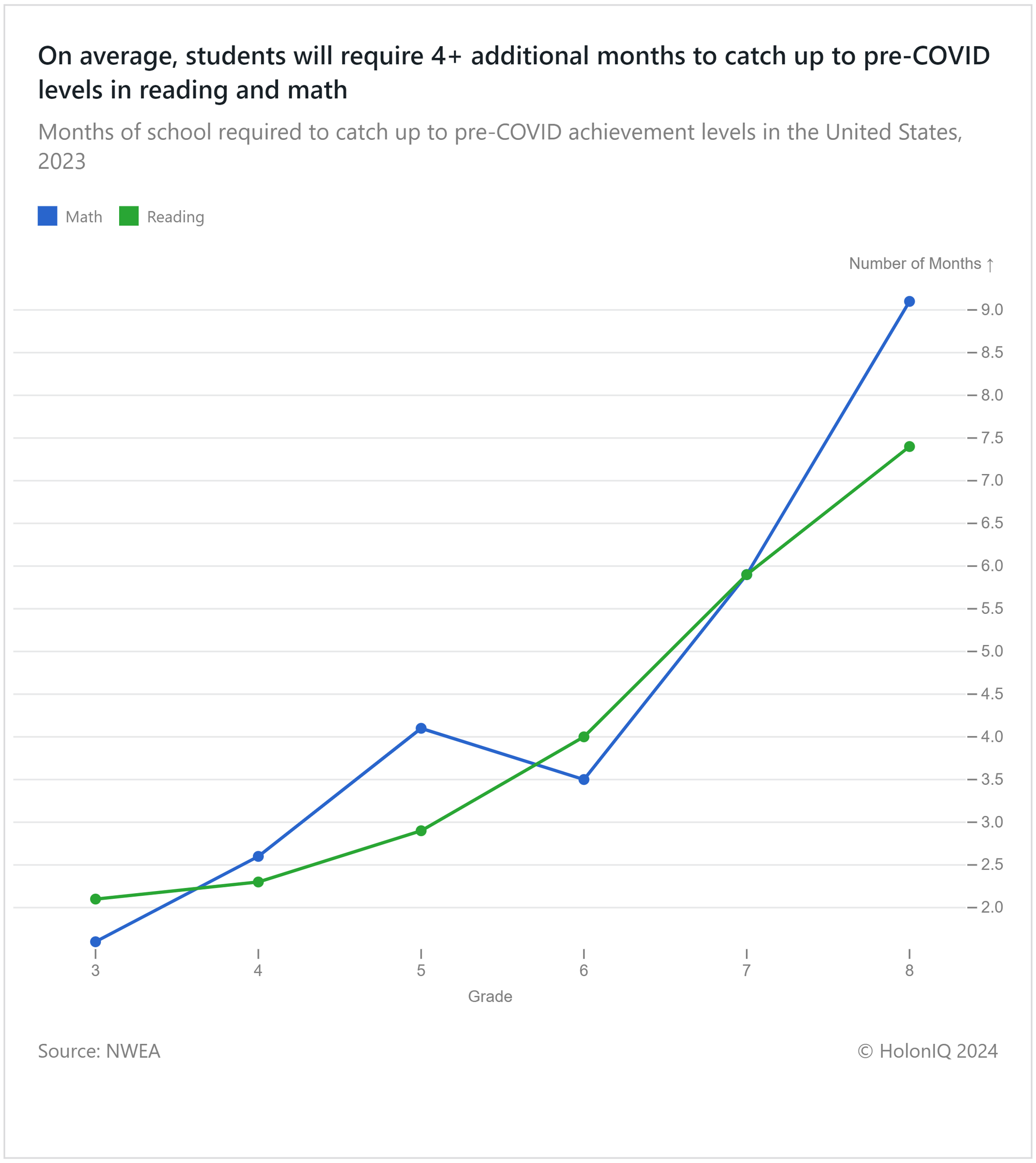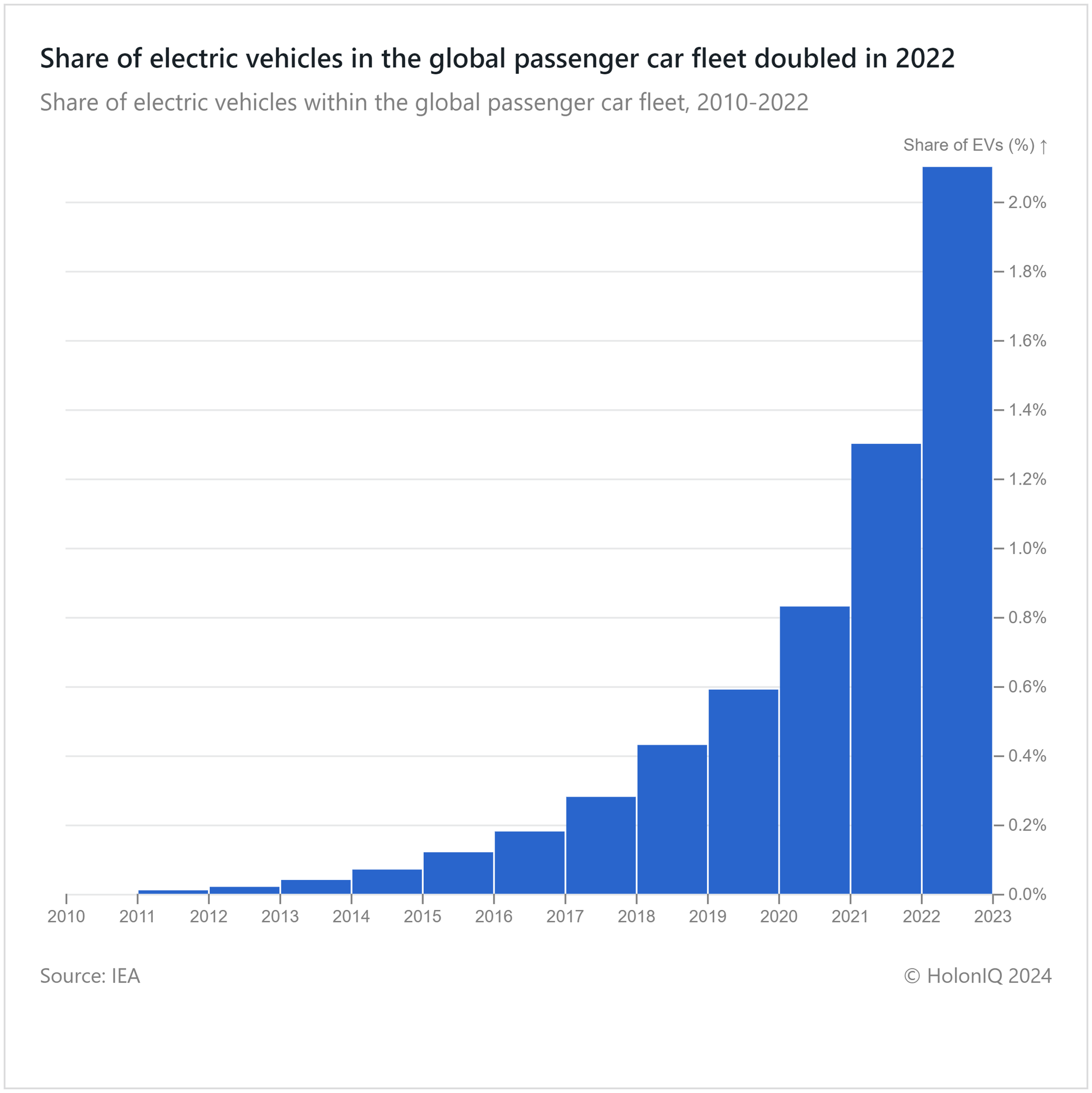🚗 2x EV Share. US Learning Loss. Sub-2 LATAM Fertility Rates.
Chart of the Day #84 looks at Electric Vehicle Growth, Learning Loss in the US and Declining Fertility Rates in LATAM.
Labas 🏰
According to a new analysis, the EU may need to impose 50% tariffs to control Chinese electric vehicle imports, but more may be required to deter Chinese carmakers. A recent report shows the COVID-19 pandemic caused significant learning losses in the US K-12 system and a projected 6% drop in lifetime earnings.
Today's Topics
📚 Learning Loss. US students take 4+ months to regain pre-COVID learning levels
🚗 Electric Vehicles. The share of EVs in passenger car fleets doubled in 2022
👶 Fertility Rates. Sub-2 fertility rates in Latin America since 2018
For unlimited access to over one million charts, request a demo.
📚 US Students Take 4+ Months to Regain Pre-COVID Learning Levels

During the COVID-19 pandemic, school closures caused significant learning disruptions, prompting the need for additional schooling for students to reach pre-COVID levels. US students require an additional 4.1 months in reading and 4.5 months in math to catch up, with the most notable impact observed in middle school, where 8th graders need an extra 9.1 months in math. Marginalized students face wider learning gaps, with Black and Hispanic students needing 6.2 and 6.4 extra months respectively, compared to 4.3 and 5.3 months for Asian and White peers. Ineffective infrastructure and planning for online learning environments, coupled with limited professional development on integrating technology into teaching, resulted in suboptimal learning experiences for many students.
To address this learning gap, schools are introducing accelerated learning, providing targeted support for grade-level material, and double-dosing, where students attend both remedial and grade-level classes simultaneously. Additionally, schools are expanding afterschool programs and summer school for extra learning time, while tutoring offers personalized one-on-one instruction to help students narrow the learning gap and return to their academic trajectory.
🚗 The Share of EVs in Passenger Car Fleets Doubled in 2022

The share of electric vehicles (EVs) in passenger car fleets has seen steady annual growth, almost doubling from 2021 to 2022 and reaching a global share of 2.1%. The increase in EV adoption is significant, given the longstanding dominance of traditional passenger vehicles spanning 120 years. This increase, which started from a negligible share in 2010, is largely attributed to increasing awareness of transportation's environmental impact and rising gasoline prices, which escalated by 49% for regular motor gasoline and 55% for diesel fuel from January to June 2022 in the US.
In 2023, the momentum continued, with 14 million EVs sold globally. Government incentives, like the US's $7,500 tax credit on EV purchases, have played a significant role in making EVs more financially viable for consumers. The EU applying stricter regulations on gasoline vehicle emissions, driven by their aim to reach climate neutrality by 2050, is expected to further increase the adoption of EVs. Investments in charging infrastructure, such as the US's NEVI program, are also on the rise. The sustained growth of the EV market makes it necessary for collaboration among policymakers, manufacturers, and utilities for its continued growth.
👶 Sub-2 Fertility Rates in Latin America Since 2018

Between 2011 and 2021, Latin America and Caribbean countries experienced a gradual decline in fertility rates, dropping to 1.85 from the previous 2.2, which is already considered low for sustaining a stable population. Brazil, Costa Rica, and Colombia witnessed rapid declines in fertility rates, attributed to various factors such as the introduction of new contraception methods and evolving family values in Brazil, phased fertility transitions in Costa Rica, and widespread private family planning programs in Colombia. These declining birth rates pose challenges to the sustainability of social services and pension systems, necessitating a shift towards increased productivity and re-evaluation of retirement age policies. Argentina and Uruguay implemented awareness programs and contraceptive initiatives, resulting in substantial drops in pregnancies among young women. In a related positive development, Chile saw a significant decrease in teen pregnancies. Governments have responded to falling birth rates by initiating policies aimed at reducing stress for working parents, including tax deductions for dependents and paid maternity leave, to boost fertility rates.
Like getting this newsletter? For unlimited access to over one million charts, request a demo.
Thank you for reading. Have a great week ahead!
Have some feedback or want to sponsor this newsletter? Let us know at hello@holoniq.com
